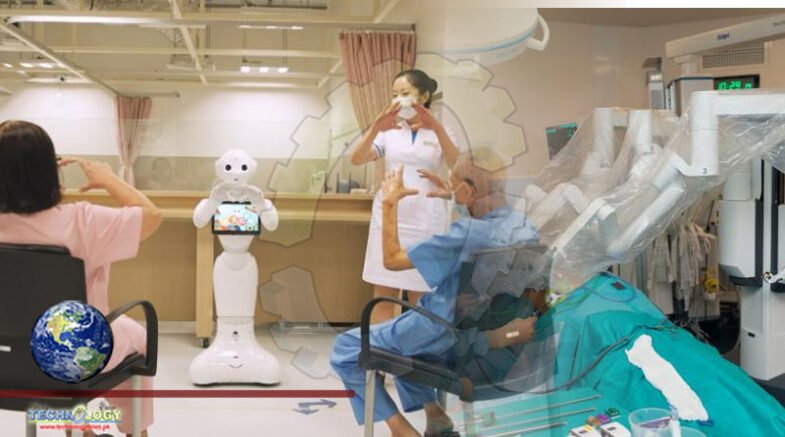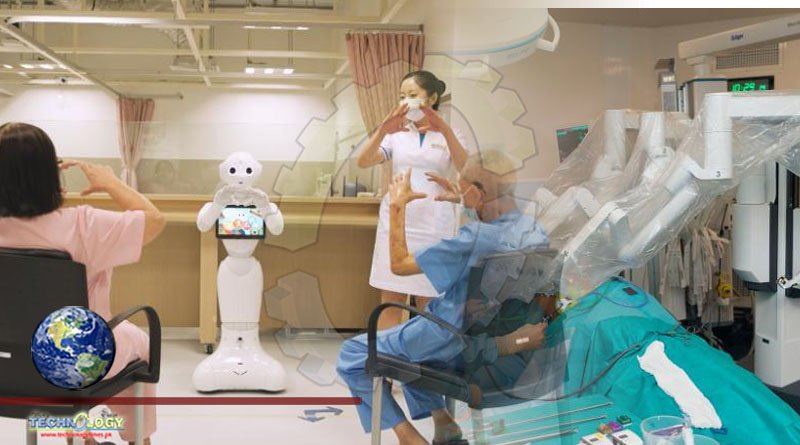In Singapore’s Health Care Industry and Changi General Hospital , there’s a chance your surgeon won’t have a heart. The cleaners might not have lungs, and the physiotherapist could be completely brainless.

In Singapore’s Changi General Hospital, there’s a chance your surgeon won’t have a heart. The cleaners might not have lungs, and the physiotherapist could be completely brainless.
That’s because at Health Care Industry as Changi General Hospital (CGH), more than 50 members of staff are robots. From performing surgery to carrying out administrative work, robots have become an integral part of the 1,000-bed hospital’s workforce, says Selina Seah, director for the Centre for Healthcare Assistive and Robotics Technology (CHART), which works with CGH to find high-tech solutions for problems in healthcare.
While CHART has been operating since 2015, the pandemic has created a new need for contactless and remote healthcare solutions.
Singapore already has the highest adoption rate of industrial robots anywhere in the world, with 9 per 100 workers — but that is mostly in the electronics sector. Now, Seah hopes robots can make healthcare more accessible, affordable, and higher quality, as well as safer for pandemic situations.”There is growing awareness that robots are becoming more important in our work,” says Seah. “Due to Covid-19 and the fact that we have to take care of more patients with less manpower, robots are now a welcome part of our daily life.”
“The three tsunamis”
By 2030, the World Health Organization (WHO) estimates there will be a global shortage of 18 million health workers.That’s a big concern for small nations like Singapore. With the 65-and-over population expected to jump from 14% in 2019 to 25% in the next decade, the Lion City is particularly vulnerable to the “three tsunamis” in healthcare, says Seah: an aging population, a shrinking workforce, and an increase in chronic disease.
The robots at Health Care Industry are all managed using “RoMi-H” — a communications system that controls things such as its sensors and data.
That’s where robots can help. CHART is trying to boost productivity using assistive technology and robotics.
Surgical robots such as the da Vinci Surgical System are among the best-known robots in the hospital, says Seah. These robots act as the human surgeon’s eyes, assisting with minimally invasive surgeries.
Outside of the operating theaters, other robots clean, deliver linen or food, help with hospital maintenance, aid patient rehabilitation, and even assist with lifting patients back into bed, helping reduce the “back-breaking” work that human carers take on, says Seah.
“It’s quite common for our young nurses to get backaches two or three years into the job. Robots can do this dangerous, manual work so that our nurses then can concentrate on providing good clinical care for our patients,” says Seah.
A smart solution
Virtual Health Care Industry is another area where CGH has seen technology deliver an improvement. Non-communicable diseases such as heart disease and diabetes are on the rise, responsible for around 71% of global deaths each year, which adds extra pressure to already-strained Health Care Industry, says Seah. Realizing that repeat visits to the hospital from patients with chronic diseases weren’t sustainable, CGH adopted a smart “telecare” system that allows doctors to monitor patients who are at home and identify problems early, says Seah.
The hospital now has more than 50 robots that help out with tasks from surgery to cleaning.Social robots have also been deployed to provide care and companionship for elderly patients with dementia, playing memory games and helping with group therapy. One of the social robots, PARO, helped alleviate stress and anxiety so much the hospital was able to reduce its use of sedatives for dementia patients, says Seah.”We thought the aged patients would not take well to the robots,” she says. “However, we discovered in our research that the elderly patients look at robots like life-sized toys. So they are brought back to their childhood and in fact, able to interact and respond better to therapy with robots than they do with a human.”
“More meaningful” lives
CGH isn’t the only hospital seeing the benefit of AI-powered employees. In 2017, robots were employed to support staff at Copenhagen University Hospital with an increased demand for blood sample testing, and autonomous mobile robots at Zealand University Hospital in Denmark travel more than 10 kilometers each week around the hospital to deliver equipment, saving staff from heavy lifting.
Assisting Health Care Industry workers to take on roles that are laborious or require high levels of precision is where robots can contribute most, says Marcelo Ang, a professor of mechanical engineering at the National University of Singapore’s Advanced Robotics Center.
“Robotics has very good potential to make people’s lives more meaningful, by letting them not do the ‘five Ds’: degrading, demeaning, dirty, dangerous or driving tasks,” Ang says, adding that robots are not a replacement for workers, but a support. According the World Economic Forum, by 2025 up to 85 million jobs will be lost to automation in some sectors; however, an estimated 97 million new roles will be created in others.
The pandemic has accelerated the development of robotics and logistics says Ang, highlighting the risks that healthcare workers take every day. As of May 2021, the WHO estimates at least 115,000 healthcare workers worldwide have died due to Covid.
Autonomous robots can remotely clean and disinfect rooms, while telehealth technology can enable doctors to meet patients virtually. Seeing the demand for remote healthcare solutions, Hong Kong’s Hanson Robotics, the team behind the “Sophia” android, have unveiled their latest creation, Grace, a human-like robot designed for the healthcare industry, which can diagnose patients using artificial intelligence and lead therapy sessions.
However, integrating robots into the workplace is costly and requires expensive infrastructure, says Seah. An additional concern is data privacy and security, she says, adding that hospitals will need robust cybersecurity to prevent hacking.
The opportunity to increase efficiency and safety, particularly during challenging times like the Covid-19 pandemic, has made the challenges worthwhile for CGH.
“This is how we think we should use technology: to help us reach out to more patients so they get better-quality care,” she says.
Source CNN
